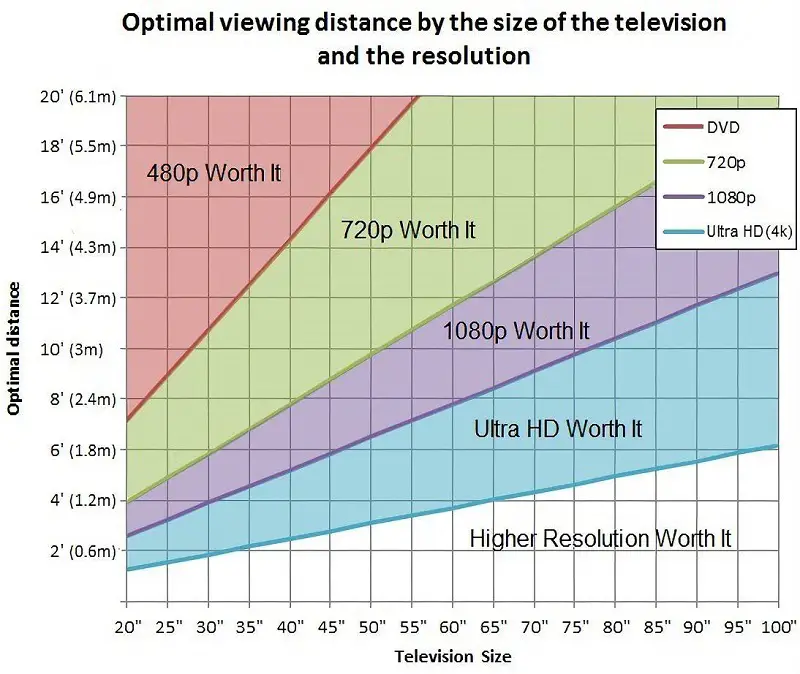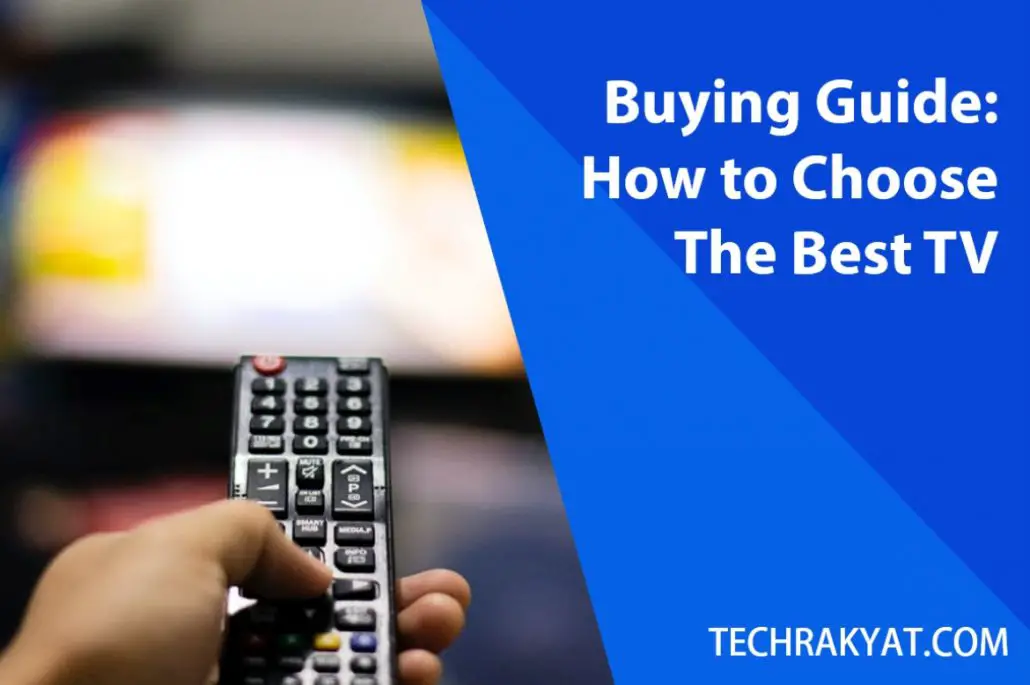TV shopping can be both exciting and challenging. When you’re choosing a TV, there are a lot of factors and technical terms you need to understand.
What’s the best TV size for your living room? 1080p, 4K or 8K? LED, LCD, QLED, OLED, or mini LED?
The following TV buying guide will explain and guide you through the most important factors to consider when buying a new TV.
Table of Contents
Toggle7 Tips to consider when buying a TV
1. Budget
4K TVs and Smart TVs can range from RM1,000 to RM20,000 depending on screen size and panel technology.
- Budget TV – RM1,000 to RM2,000
- Mid-tier TV – RM 2,000 to RM 6,000
- High-end TV – RM6,000 and above
Can an average consumer tell the difference between cheap and expensive TV? Yes, the differences between budget TV and mid-tier TV are obvious.
However, most average users will not be able to distinguish between a mid-tier TV and high-end TV unless they are placed side by side for comparison.
Therefore, buying a mid-tier TV is the best choice for most Malaysians.
2. TV Screen Size
When choosing the right TV screen size, you need to consider both the space for the TV as well as the distance you are watching from it.
The common screen sizes available in Malaysia are 32”, 40”, 42”, 48”, 50”, 55”, and 65”. Extra large TVs are available in 75″, 80″ and 100″ sizes.
The table below gives TV sizes and their corresponding viewing distances.
| TV Size | Viewing Distance (1080P) | Viewing Distance (4K) |
| 32” to 40” | 1.5m – 2m | |
| 40” to 48” | 2m – 2.5m | 1.2m – 1.8m |
| 50” to 65” | 2.5m – 3m | 1.8m – 2.4m |
| 70” and above | 3m and above | 2.5m – above |
As a rule of thumb, the optimal viewing distance should be 1.5 to 2.5 times of the TV Size.
Higher resolution TVs like 4K and 8K allow you to sit closer without seeing pixelated images.
And also check out this chart by rtings.com for the optimal viewing distance by the size of the television and resolution.

3. Screen Type
The three main types of TV panels currently available are LED, OLED, and QLED.
The LED and QLED TVs both use LCD panels with LED backlights, so they are quite similar. Then, the common LCD panels for TV are IPS and VA panels.
- IPS – excellent viewing angle, poor contrast, mediocre black
- VA – poor viewing angle, better contrast, great black colour
The QLED technology is an upgraded form of LED technology, utilizing a quantum dot layer to produce a wider range of colours.
OLED panels are completely different as each pixel is self-illuminated and can be turned off when needed, allowing the TV to display perfect black.
Here is a comparison table between LED, QLED and OLED.
| Specification | LED TV | QLED TV | OLED TV |
| Black level | Good | Very good | Perfect |
| Brightness | Good | Best | Good |
| Colour Gamut | Good | Very Good | Best |
| Viewing Angle | Poor | Poor | Best |
| Motion Blur | Good | Very Good | Best |
| Burn-in risk | No | No | Yes |
4. TV resolutions
TVs today are typically available in 1080p and 4K resolutions. And 8K TVs are getting more common too but they are really expensive right now.
- 1080p is known as Full HD, FHD. The resolution is 1920 x 1080 with 2 million+ pixels
- 4K is known as Ultra HD, UHD. The resolution is 3840 x 2160 with 8 million+ pixels
- 8K resolution is 7680 x 4320 with 33 million+ pixels
Currently, the sweet spot for TV resolution is 4K, based on current market prices for TV and common video content.
5. HDR, Dolby Vision and Dolby Atmos
If you enjoy watching movies at home, then you should get a TV that supports HDR10, HDR10+, Dolby Vision, and Dolby Atmos.
HDR10, HDR 10+ and Dolby Vision are the three main HDR formats. HDR videos can only be displayed accurately on TVs that support these formats.
And supporting Dolby Atmos ensures you can experience the best surround sound(9.1 channel) at home.
Some budget TVs falsely claim to support one or more of these audio or video formats. There is a possibility that the TVs lack the brightness and colour gamut to display such HDR content.
6. Connections and Ports
Many users do not realize that connections and ports on TV are very critical, especially HDMI ports.
It allows you to connect external devices to your TV, such as TV boxes, gaming consoles, laptops, soundbars etc.
There are HDMI 1.4, HDMI 2.0 and HDMI 2.1. HDMI 2.1 is the best port that can support 8K content and 4K gaming at 120Hz high frame rates.
Through eARC in HDMI 2.1, you can send the original full-resolution audio signal through an HDMI cable and reproduce the best sound without compromising quality
It is also important to consider the number of ports, especially if you wish to connect multiple devices to your TV.
7. Gaming compatibility
Almost any type of TV can be connected to a gaming console and played without a problem.
However, gaming-friendly TVs offer features such as low input lag, variable refresh rate VRR, FreeSync and G-Sync support, and 4K at 120Hz.
Other less critical factors
Speaker
Speakers come with every TV, and most average users will be satisfied with the speakers as they are.
People who are particular about sound quality will prefer a soundbar for their TV. Because even the best TV speaker will not match a midrange sound bar.
So, speakers are not a critical factor when choosing a TV
Smart TV Platform
Most TVs can be connected to the internet via Ethernet or WiFi. Some TVs are pre-installed with popular streaming apps like YouTube and Netflix. And there are smart TVs which run on Android TV, WebOS, TizenOS, Roku and Fire TV.
Android TV platform is the most common and popular in Malaysia. There are many Android TV apps available, it is responsive, and users can do universal search.
WebOS is LG’s default smart TV platform. It has a great, fluid and easy-to-navigate user interface. But it has very limited app choices available.
TizenOS is used by all Samsung QLED TVs. It looks a lot like LG webOS. It is faster than Android TV due to it being a lightweight operating system. There are many apps available, but still far fewer than Android TV.


不知道说啥,开心快乐每一天吧!
Do you have a review result comparing few brand of the Android TV ? I am plannig to buy one.